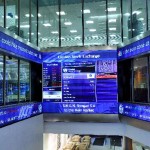 Natural gas rose on Wednesday after falling for two days as weather forecasting models continued to predict below-average temperatures in the next seven days, stoking demand for the power-station fuel as Americans crank up the heating. However, expectations for readings to moderate afterwards limited gains.
Natural gas rose on Wednesday after falling for two days as weather forecasting models continued to predict below-average temperatures in the next seven days, stoking demand for the power-station fuel as Americans crank up the heating. However, expectations for readings to moderate afterwards limited gains.
On the New York Mercantile Exchange, natural gas for delivery in December traded at $3.611 per million British thermal units at 13:15 GMT, up 1.55% on the day. Prices varied in a days range between $3.635 and $3.550 per mBtu respectively. The power-plant fuel fell by 1.8% on Tuesday but pared its weekly decline to less than 1.1% following Wednesdays advance.
Futures rebounded as forecasts called for below-average temperatures in most of the U.S. during the next seven days. NatGasWeather.com reported that cold air from southwestern Canada will drop into the Great Plains over the next 48 hours with snow and rain falling as far south as Kansas. A second wave of cold will move across the Midwest into New England on Friday and Saturday with readings dropping to between 15 and 25 degrees Fahrenheit below usual. Portions of the Midwest, Northeast and Southeast will see freezing temperatures during the weekend, NatGasWeather.com reported.
A warming trend is expected to take place across most of the U.S. after this weekends cold blast. According to MDA Weather Services in Gaithersburg, Maryland, below-average temperatures during the next five days will be followed by more seasonal temperatures between November 29 and December 3.
AccuWeather Inc. said readings in Boston on November 27 may bottom at 22 degrees Fahrenheit, 13 below usual, followed by a rebound to 36 degrees on December 3, 3 above the average. The low in New York on November 27 may be 24 degrees, 14 beneath normal, before rising to to 44 degrees a week later, 8 above seasonal. Temperatures in Chicago are expected to fall to 18 degrees Fahrenheit (-8 Celsius) on November 12, 9 below seasonal, followed by a rebound to 30 degrees Fahrenheit on December 2, 3 above average.
When cold weather is expected, natural gas surges as increased electricity demand to power air-conditioning calls for more supply of the fuel, which is used for a quarter of U.S. electricity generation. Above-average readings in the winter season have the opposite effect. Consumption usually picks up from November through March. According to the Energy Information Administration, power generation accounts for 32% of U.S. gas demand and 49% of U.S. households use the energy source for heating.
Market players will also be keeping a close watch on this week’s inventories report by the Energy Information Administration, due on Thursday. According to early withdrawal estimates, the Energy Information Administration is expected to report that stockpiles fell by between 15 and 41 billion cubic feet in the week ended November 15, compared to the five-year average decline of 2 billion and last year’s 36 billion cubic feet decrease during the comparable period.
The energy source drew support last week after the EIA reported on Thursday that U.S. natural gas inventories rose less than projected in the seven days through November 8, although the gain was still above the average. Stockpiles added 20 billion cubic feet, above the five-year average build of 19 billion and last year’s 12 billion increase during the comparable week. Inventories were expected to surge by 22 billion cubic feet according to the median estimate of 18 analysts surveyed by Bloomberg.
Total gas held in underground U.S. storage hubs equaled 3.834 trillion cubic feet, 2% below last year’s 3.914 trillion during the comparable period. The surplus over the five-year average total amount of gas remained unchanged at 1.5%.





